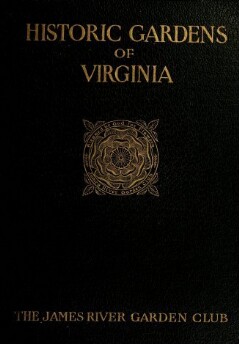Oldal 319 [319]
* O— Se ene aera Ie
Historic ‘GARDENS GE EN BEGIN TA
ai a —
sidewalks bordered with ivy and masses of larkspur, lilies and
Canterbury bells. ‘Io the left the same Maltese cross, with ivy
and dainty cowslip borders, and masses of all our dearly loved
Southern flowers. Ihe many-shaped garden plots are filled with
old-fashioned plants. The floral manuals of that period give lists
of hollyhocks, peonies, iris, tulips, lilies, nasturtium, columbine,
heliotrope, cowslips, pansies, pride of London, etc. Here, too, we
find a calycanthus planted by [Thomas Jefterson—a gentle shrub,
bringing with its perfume a memory of those olden days of dignified
friendships and courteous hospitality. A long, straight bed of roses,
edged with ivy, helps out the design. ‘Then we have long circular
beds of roses, iris, and peonies with violet borders. In one of these
beds is the Mary Washington rose, a small cluster rose nearly white,
planted by young Washington, and named for his mother—(could
any mother want a sweeter tribute from a son?) A row of hg¬
bushes stands behind the box-hedge, and doubtless the children after
lessons would delight in their abundance. ‘Turning at the little
schoolhouse, we will come back to the conservatory. A long grass¬
plot, planted in shrubs, has next the wall a mass of lilies of the
valley. In front of the quarters are long box borders, planted in
squares and circles, open and solid, the outer box border tessellated,
and an inner one of ivy. Outside of these are box designs in odd
shapes, and other long borders planted in tulips. Iwo box-trees
front the conservatory, near which we see also the shrub-magnolia
planted by LaFayette—a glorious plant in spring—and in a bed, in
all its glory the Nelly Custis rose—of creamy white—said to have ¬
been planted and named by George Washington.
And so we bid an unwilling farewell to these beautiful gardens
of George Washington—so brilliant in the sunshine of our modern
days, a design not yet equalled, of an historical interest impossible
to approach. Here young Mr. and Mrs. Washington lived their
lives of great contrasts—peace and war—isolated from the hurry¬
ing world, and yet crowded with earthly interests. Here they
lived, and here they died. Lives full of sweetness of youth and
[196]

